The more we have cycled the more the notion of time and days of the week has become oblivious to us. We rely more on levels of daylight, the grumbling of our stomachs and the temperature of the outside world to determine our actions.
Therefore it is perhaps unsurprising that, as we sat eating a very late lunch at yet another river beach down the other side of the mountain in Spain, we promptly forgot we had just lost an hour of our lives and that it was an hour later than we thought. Thinking that we had hours until the closest supermercado was due to close, we continued to people-watch trying to guess who was speaking Portuguese and who Galego.
When we finally remembered that it was 19h and not 18h, we hopped on our bikes and pedalled as speedily as we could to the soon-to-be closing shop, to restock our depleted food supplies. We would soon learn that membrillo was not a convenient lunch-time addition, but rather liable for creating a sticky mess in the bottom of a pannier bag…
The time change had some advantages though, we could sit cooking and eating dinner without having to switch on our headlamps – but given the sun wasn’t due to set until 22h, it was also very easy to cycle much later into the evening than we had planned. After the heat we had leaving Gerês, we had resolved to leave as early as reasonably possible to make the most of the cool mornings. Psychologically this was somewhat easier to do if it meant setting an alarm for 07h rather than 06h. Leaving earlier also meant that a long afternoon siesta was also even more justifiable than before… “When in Rome” and all that.
Even though when traveling by bike changes to the scenery and culture are seen more gradually, crossing into Spain from Portugal some differences were immediately apparent. benches for example, the Spanish like benches. There have been atleast three or four benches in every village that we passed through – often arranged together so that the old folk of the village can keep up-to-date with the local gossip. Suddenly shops were no longer filled with egg-based pastries but with packaged madalenas, tortilla and membrillo. There were more (mostly lycra-clad) cyclists out pedalling and drivers seemed to give us that crucial extra bit of space on the road.
As confirmation of our/my rushed and not so considered packing, I had managed to pack two out of three pairs of socks with holes and I hadn’t had time to test my attempted resealing of the seams of my waterproof coat. Rain last week, when we were around Viseu, concluded that it had not been successful. Taking advantage of the empire belonging to the multi-national giant Decathlon we set off towards the closet store in Ourense to find a replacement.
Our early start was scuppered by a puncture after about 15 minutes of cycling. A perhaps expected result of spending the night camping in between blackberry bushes. Thorn removed, inner tube patched, we headed on our way past a very smelly, luminous green reservoir. It was a easy decision to not stop at the sign-posted river “beach”.
A pink-highlighted track on OsmAnd gave us hopes of another ecopista ahead, but alas is was just a very hilly tree-route filled pilgrim-path. As delightful as it might have been on foot or mountain bike, we decided that would not be the case on a touring bike and so headed back to the tarmac. Still adjusting to the Spanish timetable, we arrived in Bande just as the shop was about to close for lunch and found a very non grass-filled park to hide from the sun for the next few hours under the trees. We lay in the shade questioning how we ever considered leaving Lisbon via Alentejo and pedalling through the South of Spain – the North was plenty hot enough.
Since crossing into Spain we had seen many signs for termas (hot springs), crucially free and open to all. Usually we would have been drawn in by the temptation of a warm outdoors bath, but on these long hot afternoons we could think of nothing worse. Soaking our heads under the nearest fountain was much more refreshing.
The heat didn’t seem to subside until the sun went down, so we played our usual trick of heading to the closest river, just outside of Ourense, to find a place to camp. We were starting to notice a downside to our river-side campings, namely mosquitoes. We had a habit of becoming their dinner as we were cooking our own. Given that the mossies seemed to be capable of biting through two layers of clothes, were undeterred by repellent, and have a questionable role in the ecosystem, our mosquito slaying skills have improved dramatically.
The next morning, we made an early dash into Ourense before it got too crazy with people and traffic. Trip to Decathlon accomplished, new raincoat and socks squirrelled away, we navigated our way out of the city.
Without quite realising it at the time of planning, our plotted route suggested that the Rio Sil was going to become our friend. Our naively chosen route would follow the Sil from just beyond Ourense in Galicia, where it joined the Rio Miño, across into (Castille y) Leon almost to its source on the edge of the the Picos de Europa. Swims were to be aplenty, stone skimming skills to be honed and navigation simple: follow that river.
The roads we took weaved up and down the sides of the valley; bigger, newer, dual-lane national roads lay at the bottom of the valley – flatter for sure, but much busier and with inferior views. In the mornings, we would invariably come across the bread-van wending its way through the villages providing Pedro with a mid-morning snack, whereas I would resort to staring at the hedgerows looking out for the next cherry tree ripe for the picking. There have been plenty of fig trees about ever since we left Lisbon, alas despite being plump they have all been quite green. We’re hoping that in just a few more weeks they will be making a very welcome addition to our breakfasts.





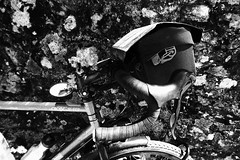



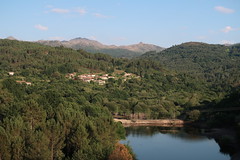
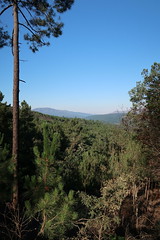
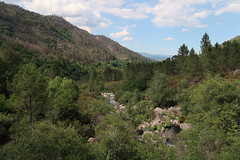














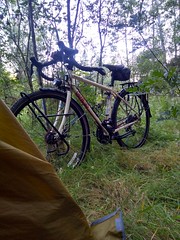












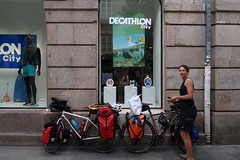



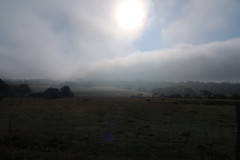








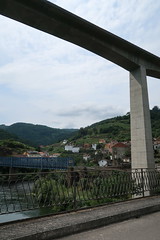









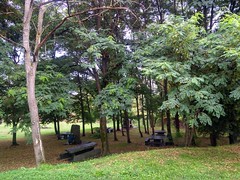

Thanks for sharing all of these lovely notes and images. Please keep them coming, they’re a very welcome distraction from the frustrations of yet another day at my desk!
Down with desks!